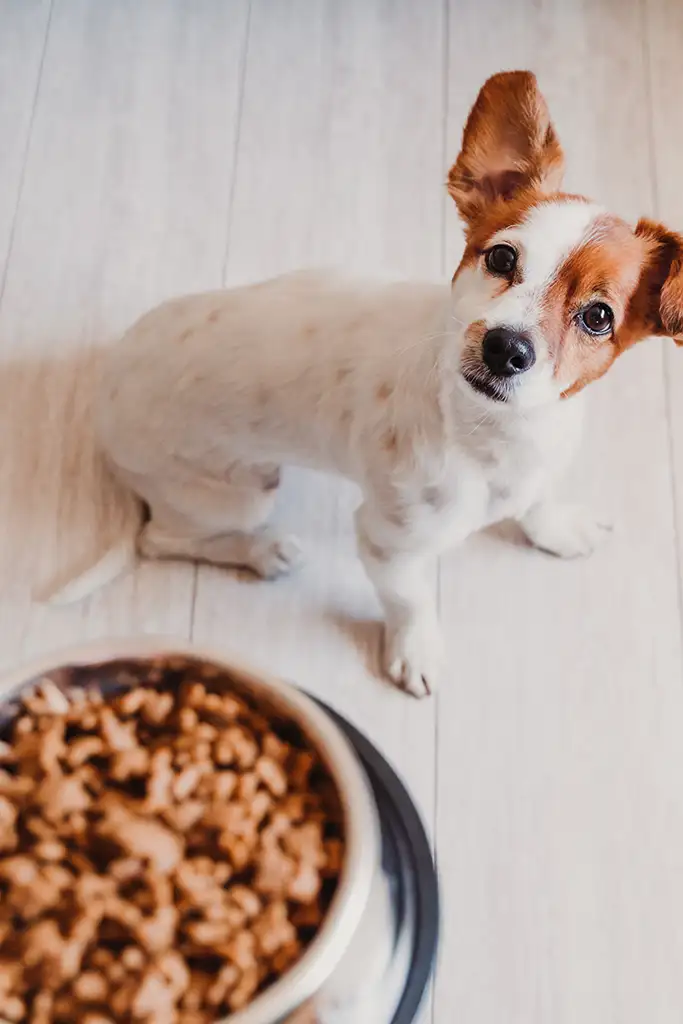Dachshund Back Problems: Prevention Tips for a Healthy Spine
Quick Guide
Dachshunds, known for their unique long-backed, short-legged appearance, make delightful companions and are widely adored by pet owners. However, their distinct physical features also make them more susceptible to back problems, including disc herniation, which may result in minor back pain or even paralysis.
It is important to take preventive measures to ensure your Dachshund maintains a healthy spine and lives a comfortable, pain-free life. One significant way to care for your Dachshund’s spine is by managing their physical activities appropriately.
High-impact actions, such as jumping on or off furniture, can be detrimental to their vulnerable backs. Investing in ramps or pet steps for furniture access can minimize strain on their spine and reduce the risk of injury.
Another crucial aspect involves maintaining your Dachshund’s ideal weight, as excess weight can place further stress on their already delicate back structure.
Lastly, scheduling regular veterinary check-ups is essential to monitor your pet’s back health. Early detection of potential issues allows for timely interventions, providing your little friend with the best chance at preventing severe back problems.
In this article, we’ll explore more tips and tricks to protect your Dachshund’s back and ensure they live a long, happy, and healthy life.
Understanding Dachshund Back Problems
Intervertebral Disc Disease (IVDD)
Intervertebral Disc Disease (IVDD) is a common health concern for Dachshunds due to their long spine and short legs. This condition occurs when the cushioning discs between the vertebrae of the spinal column bulge or rupture, causing pain and sometimes resulting in paralysis. To minimize the risk of IVDD:
- Maintain a healthy weight for your Dachshund to reduce stress on their spine.
- Use ramps or pet stairs to avoid jumping on and off furniture.
- Get regular vet check-ups to monitor your dog’s back health.
Genetics
Genetics plays a significant role in Dachshund back problems. Some Dachshunds may be more predisposed to IVDD and other spine issues due to their genetic makeup. Responsible breeding practices can help reduce the risk of passing on faulty genes associated with back problems. When selecting a Dachshund:
- Choose a reputable breeder who screens for genetic disorders.
- Ask for your dog’s pedigree and health history.
Anatomy of the Dachshund Spine
The unique anatomy of the Dachshund spine contributes to their increased risk of back issues. Key features of the Dachshund spine include:
- Longer spinal column compared to other dog breeds.
- Short legs, which impact weight distribution and stress on the spine.
Understanding the unique anatomy of the Dachshund can help you take the necessary precautions to protect their back health. Measures to support the Dachshund spine include:
- Limiting stair climbing.
- Providing orthopedic pet beds for comfort and spine support.
- Engaging in gentle exercises to help maintain muscle strength and flexibility.
Helpful Products:
- Ramps or pet stairs: To prevent jumping onto furniture.
- Orthopedic pet beds: Provide support for the spine.
- Harnesses: Instead of collars, use a harness to distribute pressure more evenly during walks.
Dachshund back problems can be managed and mitigated with proper care and attention. Adhering to these prevention tips can aid in ensuring a healthier and happier life for your Dachshund.
Prevention and Management of Back Problems
Maintaining a Healthy Weight
One of the key factors in preventing back problems in Dachshunds is maintaining a healthy weight. Obesity can put extra stress on their long backs, increasing the risk of intervertebral disc disease (IVDD).
- Regularly weigh your Dachshund and compare their weight to breed standards.
- Consult with your veterinarian to determine the ideal weight for your dog.
- Monitor treats and food intake: use a measuring cup to portion out their meals.
Proper Diet and Nutritional Management
A balanced diet plays a crucial role in the overall health of your Dachshund. It’s important to choose a quality dog food formulated for the breed’s specific needs.
- Opt for high-quality dog food that meets the nutritional requirements of Dachshunds.
- Discuss your dog’s diet with a veterinarian to ensure its appropriateness.
- Always measure portions and avoid overfeeding.
Appropriate Exercise
Keeping your Dachshund active with appropriate exercise is essential for strengthening their back muscles and maintaining a healthy weight.
- Engage in low-impact exercises such as walking and swimming.
- Avoid activities that might strain their back, like jumping or climbing stairs.
- Gradually increase the duration and intensity of exercise to avoid overexertion.
Limit Jumping and Climbing
Jumping and climbing can put significant stress on a Dachshund’s spine. Minimize these activities to help prevent back problems.
- Get pet stairs or ramps for furniture access.
- Block off access to stairs in your home.
- Provide alternative forms of stimulation and play that don’t involve jumping.
By following these guidelines, you can help your Dachshund maintain a strong and healthy back, reducing their risk of experiencing back problems.
Supportive Measures and Home Adaptations
Using Ramps and Pet Steps
One of the most effective ways to prevent back problems in Dachshunds is by using ramps and pet steps. These help reduce the strain on their spine by eliminating the need to jump on and off furniture. When selecting ramps or pet steps, consider the following:
- Height and angle: Ensure the ramp or steps are the appropriate height for your furniture and the angle is not too steep.
- Stability and traction: Ramps and steps should be stable and provide good traction to prevent slipping.
- Portability: Choose a lightweight and foldable option if you plan to move it around frequently.
Introducing Furniture Ramps and Baby Gates
To further protect your Dachshund’s back, introduce furniture ramps to help them safely access raised surfaces such as sofas and beds. As for baby gates, these are useful for restricting your Dachshund’s access to stairs, which can cause excessive strain on their spine. When installing baby gates, ensure they are:
- The correct width: Measure your staircase and choose a gate that fits securely.
- Easy to install and remove: Opt for a pressure-mounted or hardware-mounted gate depending on your needs.
- Durable: Select a sturdy material like metal or wood for long-term use.
Harnesses and Supportive Collars
Using a properly fitted harness or supportive collar can significantly reduce the risk of back injuries in Dachshunds. These can help distribute weight evenly and prevent putting unnecessary stress on their spine. Consider the following when selecting a harness or collar:
- Secure fit: Ensure that the harness or collar fits snugly without being too tight or too loose.
- Adjustability: Look for products with adjustable straps for a customized fit.
- Comfort: Choose a harness or collar made from comfortable materials like padded fabric.
By implementing these supportive measures and home adaptations, you can significantly reduce the risk of back problems in your Dachshund. Remember, it’s essential to monitor your dog’s weight, provide regular exercise, and consult your vet for additional guidance.
Recognizing and Addressing Back Pain and Injuries
Symptoms and Detection
Dachshunds are prone to back problems such as intervertebral disc disease (IVDD) due to their long backs. Recognizing the symptoms of back pain and injuries is crucial to address the issue promptly. Symptoms may include:
- Difficulty walking or wobbling
- Stiffness or reluctance to move
- Signs of pain, such as yelping, shaking, or hunched posture
- Loss of appetite or lethargy
- In severe cases, paralysis or loss of control over the hind legs
Diagnosis and Imaging
If you suspect your Dachshund is experiencing back pain, consult your veterinarian for a proper diagnosis. Diagnostic options may include:
- Physical examination to assess the area of pain and check for neurological issues
- X-rays to identify the location of slipped discs or other spinal issues
- Advanced imaging, such as CT scans or MRIs for a more detailed view of the spine
Treatment Options and Pain Management
Treatment options for Dachshunds with back pain or injury may include:
- Conservative management: such as rest, pain medication, and anti-inflammatory drugs
- Surgical intervention: to remove ruptured discs or correct spinal issues in severe cases
Pain management is vital to ensure your Dachshund’s comfort during recovery:
- Painkillers: prescribed by your veterinarian to manage pain and inflammation
- Shock-absorbing surfaces: provide comfortable bedding or orthopedic support
Rehabilitation and Physical Therapy
To aid in the recovery process and help prevent future back problems, rehabilitation and physical therapy may be necessary:
- Controlled, gentle exercises: to strengthen core and back muscles
- Physical therapy: under the guidance of a professional to restore mobility and function
- Assistive devices: such as harnesses and carts to support your Dachshund if needed
Remember to follow your veterinarian’s advice and treatment plan to help your Dachshund recover from back pain or injury, and take steps to maintain their overall health and prevent future issues.
Role of Veterinary Care in Prevention and Treatment
Veterinary care plays a crucial role in preventing and treating dachshund back problems, such as Intervertebral Disc Disease (IVDD). Regular checkups and, when necessary, surgical intervention can help maintain your dachshund’s overall health and well-being.
Regular Veterinary Checkups
To prevent back problems in your dachshund, it’s essential to maintain regular veterinary checkups. These appointments are vital for:
- Early identification of any potential issues
- Monitoring your dachshund’s overall health
- Assessing their lifestyle and making necessary adjustments
During the checkups, your veterinarian may suggest preventive measures such as:
Lifestyle modifications:
- Using ramps for furniture access to avoid jumping
- Avoiding stairs or using pet gates to limit access
- Encouraging exercise to maintain a healthy weight
Equipment recommendations:
- Using a body support harness when walking your dachshund to minimize strain on their back and neck
- Incorporating orthopedic bedding for proper spinal support
Surgical Intervention
In case your dachshund experiences significant back problems or is diagnosed with IVDD, your veterinarian may recommend surgery as a treatment option. Different surgical intervention techniques include:
- Standard surgery: Removal of damaged discs
- Minimally invasive surgery: A less invasive approach to disc removal
Factors affecting the decision for surgery may include:
- Severity and duration of symptoms
- Response to conservative management (steroidal drugs, pain medication, etc.)
- Imaging results (x-rays, MRI, or CT scans)
Surgical intervention aims to alleviate pain and restore mobility, but it’s important to follow post-operative care instructions provided by your veterinarian to ensure a successful recovery.
Summing Up
In summary, maintaining regular veterinary checkups and being aware of possible surgical intervention options are essential components in preventing and treating dachshund back problems. Implementing lifestyle modifications and using the right equipment can significantly contribute to your dachshund’s long-term health and well-being.










